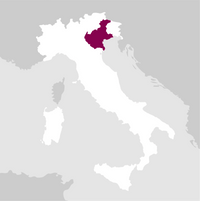Description
Nino Franco Brut comes exclusively from high hillside vineyards in the historic Prosecco production area. This elegant cuvée is dedicated to Giovanni Franco, known as Nino, son of the company's founder Antonio: creamy, with fine, persistent bubbles and an incredible tasty note.
Awards
Details

Perlage

Perfume

Color

Taste
Serve at:
06 - 08 °C.
Longevity:
03 - 05 years

Pairings
- Start up year: 1919
- Oenologist: Primo Franco
- Bottles produced: 1.100.000
But it was the "quiet revolution" of Primo Franco, Antonio’s grandson, that brought the wind of change, opening the doors of the best restaurants in the world to his Valdobbiadene Prosecco wines. Primo bravely crossed the Piave, leaving behind an agricultural world that exclusively evolved around itself.
Primo’s new wave of Prosecco – authorial, intimate and identifying – is the embodiment of his experiences: travels, encounters, meetings with chefs and gastronomes of the Nouvelle Cuisine, studies in enology and passion for architecture, as well as conversations and drinks with friends.
Today, after making history for a century, Nino Franco is the icon of Valdobbiadene Prosecco. While observing the utmost respect for his homeland, he undid – using quality and imagination – all the prejudices against an easy and standardized wine, one considered as an endowment of a rustic and pragmatic culture. Read more


| Name | Nino Franco Valdobbiadene Prosecco Superiore Brut |
|---|---|
| Type | White organic charmat method sparkling wine brut |
| Denomination | Conegliano Valdobbiadene Prosecco DOCG |
| Size | 0,75 l |
| Alcohol content | 11.0% by volume |
| Grape varieties | 100% Glera |
| Country | Italy |
| Region | Veneto |
| Vendor | Nino Franco |
| Soil composition | Very different composition. On the steepest and most eroded slopes, they are thin, with an accumulation of organic substance on the surface in direct contact with the limestone substrate. More stable situations with clay at depth are found in developed areas, on fluvioglacial deposits with moderately deep soils. |
| Wine making | Grapes are crushed. Cooling of the must and fermentation in temperature-controlled steel tanks. |
| Aging | Charmat Method. Second fermentation in autoclave. |
| Allergens | Contains sulphites |







